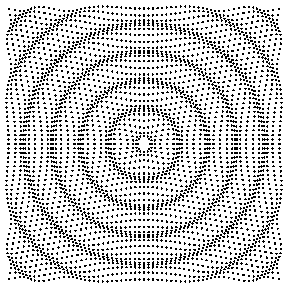This is a lesson summary. The full lesson can be viewed by purchasing an online course subscription.
Learning Objective
In this lesson we will learn how sound waves transfer energy and how sound waves can be characterised.
Learning Outcomes
By the end of this lesson you will be able to:
- Define what sound waves are and explain how they are generated.
- Describe how sound waves consist of compressions and rarefactions, and represent these graphically.
- State the frequency range of human hearing and define ‘infrasound’ and ‘ultrasound’.
- Compare sounds with different intensities and decibel levels.
- Perform calculations involving sound waves.
- Describe the behaviour of sound waves when they encounter different types of boundaries.

(Image: Skitterphoto, Pixabay)
Lesson Summary
- Sound is a form of energy that is transferred as mechanical, longitudinal waves.
- Sound waves can travel through solids, liquids and gases, but not through a vacuum.
- Sound waves involve alternating regions of high pressure (compressions) and low pressure (rarefactions).
- On a graph, compressions are represented by peaks and rarefactions are represented by troughs.
- Like all waves, the frequency, wavelength and velocity of a sound wave are mathematically related, as shown by the following formula:
- The frequency of a sound wave is related to its pitch – the higher the frequency, the higher the pitch.
- The amplitude of a sound wave is related to its loudness – the greater the amplitude, the louder the sound.
- The loudness (intensity) of sound is measured using the decibel scale.
- This uses the units decibels, which have the symbol dB.
- The decibel scale is a logarithmic scale, which means that for every 10 dB increase in sound level, there is a 10-times increase in sound intensity.
- Humans can detect sounds ranging from 20 Hz to 20 kHz, but this varies with age, sex, lifestyle and environmental factors.
- Some animal can detect sound waves with frequencies outside this range.
- Infrasound is sound with frequencies below 20 Hz.
- Ultrasound is sound with frequencies above 20 kHz.
- Three outcomes are possible when a sound wave encounters an object:
- Transmission – the sound wave travels through the object.
- Reflection – the sound wave bounces back off the object.
- Absorption – the sound wave is ‘trapped’ by the object and converted to heat energy.
- Hard surfaces reflect sound waves more than soft surfaces.
- Thicker or more dense objects absorb more sound; thinner or less dense objects transmit more sound.
- Low frequency sounds are more likely to be transmitted; high frequency sounds are more likely to be reflected or absorbed.

A sound wave emanating from a single source.
(Image: © Dan Russell)
(Header image: Thaut Images, Adobe Stock)
